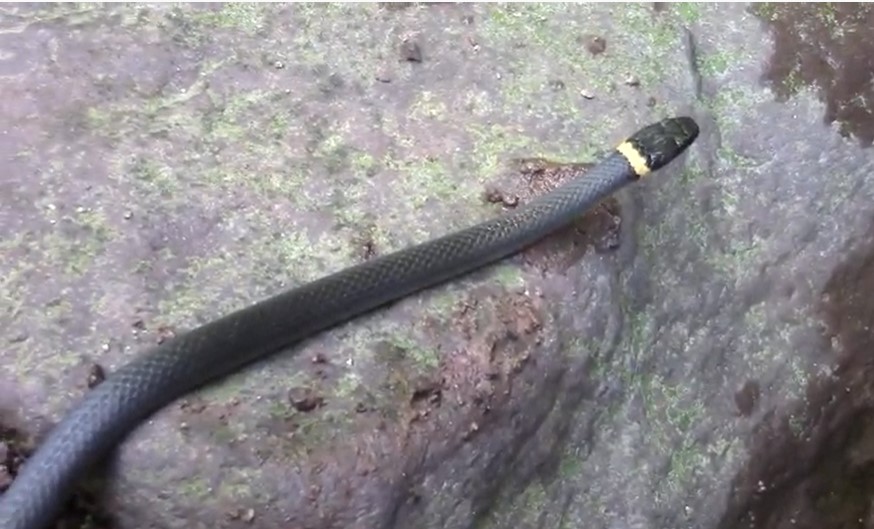
The Florida Ringneck Snake is one of the most commonly encountered snakes in Florida, largely because its small size means that it will often find its way into domestic properties. These are among the smallest snakes to be found in the state and are harmless to humans, with teeth that are too small to break the skin, even though their saliva is toxic. Most people will notice the Florida Ringneck Snake, or the Southern Ringneck Snake (Diadophis Punctuatus Punctuatus) as it is otherwise known because of the bright orange coloring on the underbelly, which is often used as a defensive mechanism.
Appearance And Diet
The name of the Florida Ringneck Snake is certainly an accurate of the most distinctive feature when looking at the animal, as the ring of light colored scales around the neck of the animal is in stark contrast to the darkly colored body of the animal. The underside of the snake is a bright orange color, but most people will not see this unless they get the opportunity to handle such a snake. These snakes will usually grow between six and ten inches in length, and will be slightly larger in diameter than the average earthworm.
The diet of the Florida Ringneck Snake is largely dependent on what sort of prey is in the immediate vicinity, but they will commonly eat all sorts of small animals including snakes, lizards, frogs and worms. Although not venomous in the traditional sense, these snakes have a form of toxic saliva which is created, and kill their prey using constriction and this saliva to kill their prey.
Behavior And Habitat
The Florida Ringneck Snake isn't generally considered to be particularly aggressive, and many people who handle them regularly will find them to be quite docile. One interesting defensive trait that they have when encountered with a predator is to curl the bottom of their tail into a coil, and show the brightly colored underside of this tail to a predator. As it is a very small animal then it will often squeeze itself into very small cracks, and will look to hide themselves under cover in hot weather.
The Florida Ringneck Snake will normally be found in woodlands with moist soil which is the best surroundings for them, and flatland forests are often ideal for these snakes. They will also show a preference for forests where there is plenty of leaf litter, soft soil and other ground cover which will help to reduce the exposure to predators. Although the species is a very common snake to be found in Florida, there are Southern Ringneck Snakes to be found in many of the southern states, and even into Mexico.
Reproduction And Growth Cycle
Snakes generally share a mating season in Spring, and this is no different for the Florida Ringneck Snake. During the mating season females will attract their mates by releasing pheromones, and the male will bite the ringed neck of his mate in order to position himself to impregnate the female. Once the mating has been completed the female will then lay a clutch of between three and ten eggs which will usually be deposit in a safe area of loose soil or even under the cover of a rotting log.
These eggs will then hatch in August and September, and these hatchling can be up to four inches in length. Juvenile Florida Ringneck Snakes will usually grow quite quickly, and are left to fend for themselves after hatching. Although these snakes are known to live for up to six years in captivity, these hatchlings will actually grow into adults in their first year, and have a lifespan of up to ten years in the wild.
Go back to the pestcontrolsnake.com home page.
Copyright 2021 - pestcontrolsnake.com
Nationwide Snake Control